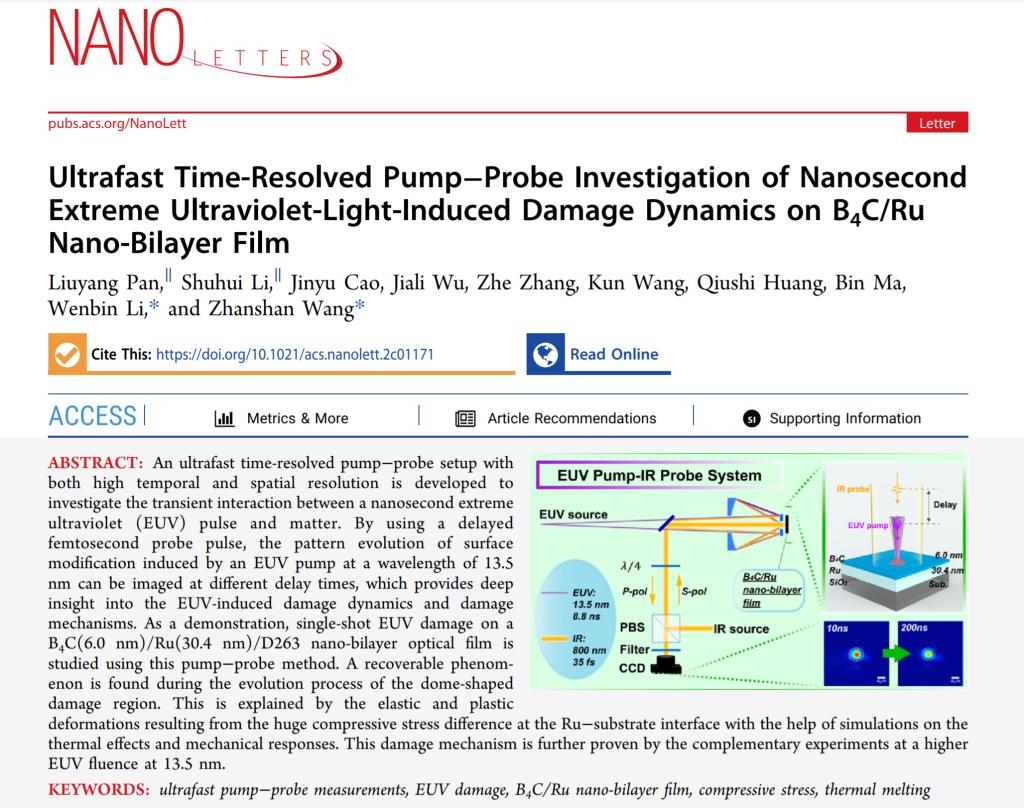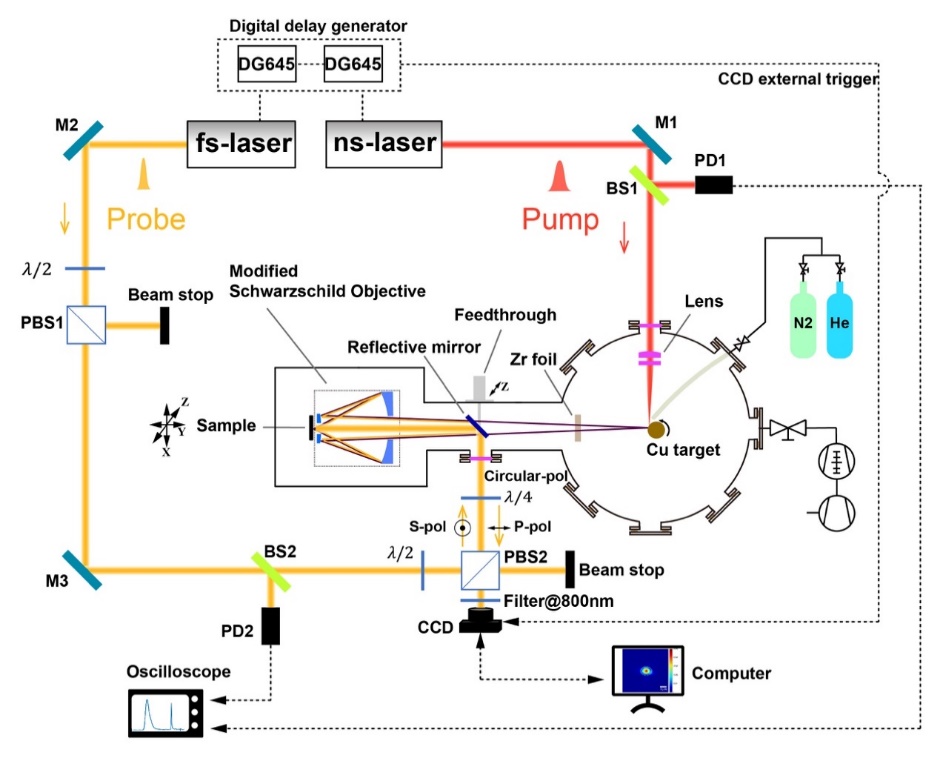Recently, Prof. Wenbin Li and Prof. Zhanshan Wang from Tongji University's School of Physical Science and Engineering published a paper online in Nano Letters. Their paper examined the damage dynamics caused by nanosecond extreme ultraviolet light on a B4C/Ru nano-bilayer film using ultrafast time-resolved pump-probe investigation. For this article, a new testing system was developed to investigate how extreme ultraviolet irradiation damages B4C/Ru nano-bilayer film mirrors. The system used a nanosecond extreme ultraviolet pump-probe-femtosecond infrared laser probe for imaging, with high time- and space-resolution, and revealed a self-recovery phenomenon within the damage zone.

Over recent years, nations across the globe have built and advanced a latest model of extreme ultraviolet/X-ray free electron laser (FEL). This system furnishes ultra-intense and ultra-fast sources of coherent light within the ultraviolet-X-ray range. The light is used in fundamental scientific research in physics, chemistry and materials. Optical mirrors made from thin films are essential in building the extreme UV/X-ray FEL beamline. They allow for beam deflection, monochromaticity, focusing and other functions. Due to the ultra-high peak brightness of the XFEL light source, the mirrors' capability to withstand irradiation damage and the resulting damage mechanism are the main concerns in designing FEL beamlines. Currently, XFEL thin-film mirror damage studies use methods that characterize the damage zone's final shape offline. This approach cannot provide information on the time-resolved ultrafast damage dynamics. Consequently, there is an immediate requirement for developing in-situ characterization techniques online, which are vital to comprehend the ultrafast damage dynamics process and damage mechanism in-depth.

Fig. 1 Nanosecond extreme ultraviolet pumped-femtosecond infrared laser probe imaging damage test system.
In response to those scientific issues, the team chose nanosecond extreme ultraviolet light as the pump light and femtosecond optical laser as the detection light. They created a nanosecond extreme ultraviolet pumping - femtosecond infrared laser detection imaging damage test system (Figure 1) with high temporal and spatial resolution. The technology can achieve real-time imaging detection of nanosecond extreme ultraviolet damaged thin film mirrors. It solves technical problems such as controlling the temporal sequence of pump light and suppressing stray light. Real-time imaging detection is performed successfully. To meet the needs of the FEL-I beamline in China's hard X-ray FEL device (SHINE), a team of researchers created a B4C/Ru double-layer film mirror. The researchers then investigated the effects of extreme ultraviolet damage on the film using a pump-probe system (refer to Figure 2). The experiments revealed that when exposed to extreme ultraviolet radiation, B4C/Ru bilayers created bump-shaped harm that enlarged rapidly and then partially healed. By using theoretical simulations and experimental tests, the researchers discovered that compressive stress created inside the Ru film due to EUV radiation causes the bilayer to detach from the surface of the substrate and form bulge-like damage. This study provides a physical model of thermal stress damage, which explains the phenomenon of partially recovering the damaged part of the B4C/Ru bilayer film.

Fig. 2 displays a map of the topography test for the B4C/Ru nano-bilayer film, showcasing the temporary damage it experienced. The chart also highlights the changes in both experimental and simulated damage values over time, along with the thermal stress damage physical model and test results.
This research created a new method for studying extreme ultraviolet and X-ray damage. The method uses a laser imaging probe, combining multiple offline characterisation methods. It's the first of its kind and can explore the damage dynamics process and mechanism in depth. The technique could be expanded to the realm of femtosecond X-ray free-electron lasers to enhance the femtosecond XFEL pump-femtosecond optical laser detection process and examine the ultrafast damage dynamics of thin-film mirror XFEL within the femtosecond time frame.
Liuyang Pan and Shuhui Li, doctoral students from the School of Physical Science and Engineering at Tongji University, share first authorship of the paper, alongside Professor Wenbin Li and Professor Zhanshan Wang who served as corresponding authors. The National Natural Science Foundation of China supported this research project.
Link:https://pubs.acs.org/doi/10.1021/acs.nanolett.2c01171
